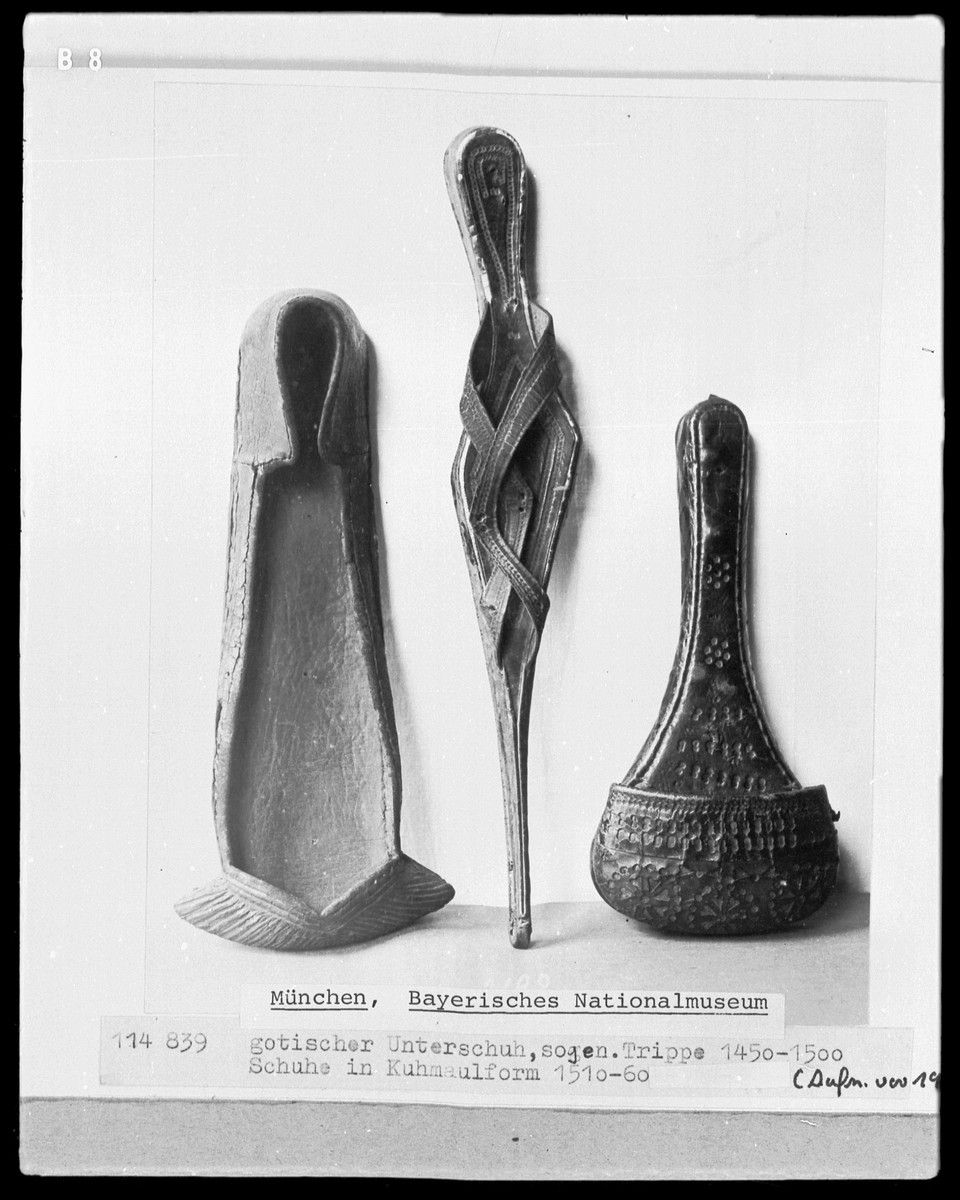16th Century Footwear
- Rani Jain
- Nov 19, 2018
- 3 min read
Updated: Jun 20, 2021
When it became passé to wear long toed shoes in the 15th century and the fad for hose with leather soles passed, boots and shoes became the new vogue.

After 1490 the shape of shoes changed to become very broad. At first the new style of shoe looked like a duck's bill and hence the Mary Janes of the time was known as “duck's bill.” These shoes had sufficient volume to accommodate each toe with a separate compartment.

Later in 1510 the shoe changed again to resemble a bear's paw. Known also as a Scarpine, the shoe fastened with a strap over the instep and the upper covered the toes only. By 1540 the shoe covered the entire foot and had fine cuts in the leather. These were often lined with soft fur and sometimes silk. Worn originally by the privileged classes the shoe exhibited the development of craftsmanship with a hard sole combined with a very soft upper.

When length finally became old fashioned, width became the next fashion excess. Popular in the English Tudor court and other northern European states of the sixteenth century, shoes with widths that extended well beyond the foot were known variously as the hornbill, cow-mouth, or bearpaw.


This new dimension suffered the same excesses as the long toe. The shoe style was prolific during the reign of Henry VIII (1491-1547) and there was even a military version of the bear's paw. The shoes caused people to walk with a waddle. Eventually the practice of wearing these shoes was outlawed by Henry's daughter, Mary I (1516 -1558).

Bloody Mary wanted to marry a catholic and was keen not to upset the Pope some authorities believe the breadth of men’s shoes became of concern as they were worn broader and broader and the association with the Virgin Mary of obvious alarm to the patriarch of the church. So, under England's Queen Mary, another sumptuary law was passed, and although its wording is lost, it can be assumed that the width of the toe was similarly limited according to social status and wealth of its wearer, limited to six inches across the ball of the foot. The popularity of the Bear’s Paw soon dwindled and by 1560 the style for slightly pointed toes had returned in fashion.

· Chopines
The last dimension was now to be explored-height. The ancient Greeks first put platform sandals on the feet of their actors to give them distinction, suggesting the performer was playing an important person. Ancient Greek women adopted cork-soled versions, called Cothurnus. Fifteenth-century aristocratic Venetian women donned stilted mules or shoes, called chopines, to reflect their high social status.

If the platform was made very tall, that meant that the wearer was one of a high social status
Fashioned in velvet with tack-work or white alum tanned kid with punch-work brogueing, chopines not only added height, but also décor to the silhouette.

Although called "depraved" and "dis-solute" by the church, the style traveled across Europe where by 1600 even Shakespeare wrote in Hamlet "Your Ladyship is nearer to heaven than when I saw you last by the altitude of a chopine."

Maidservants were required to steady the wearers of some of the tallest chopines that could reach a height of up to 39 inches (one meter). Chopines fell from fashion when prostitutes donned them, ruining their status for women of breeding. Heels, introduced in the 1590s, eventually displaced the platform mules, although some extant examples of chopines date as late as 1620.

Bibliography
Cameron, Kippen. Foot talk Blog. <https://foottalk.blogspot.com/>. April 13, 2021.
Steele, Valerie. The Berg Companion to Fashion. Oxford ; New York : Berg, 2010.
Walford, Jonathan. Love to Know. <https://fashion-history.lovetoknow.com/fashion-history-
eras/history-womens-shoes>. April 13, 2021.



Comments